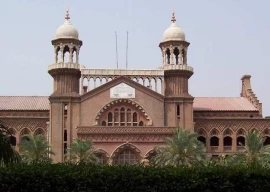
KARACHI:
For centuries, gemstones have been presented to the wealthy and royalty as gifts. They have been used in coronations, carved into mausoleums, embellished on statues and used for healing.
Ancient civilisations in Asia and South America began to attribute medicinal and magical powers to gemstones, and even today, there is a long-standing tradition of healing with precious stones in the Arab world.
Sumaya Durrani, an artist and the former principal of the Pakistan Gem and Jewellery Institute, attributes the healing properties to the way the crystals are formed. “When the minerals present in gemstones come in contact with the minerals inside us, they tend to enhance certain attributes and abilities.”
Dr Mariam Aftab, a specialist in Reiki (a Japanese technique for stress reduction and healing) agrees, “Gemstones have healing qualities. Healing houses keep machines called rotators which are embedded with green jade, because many hormonal and digestive problems can be treated with green jade.”
Amongst the most well-known precious stones today, emerald has the power to “heal eyesight problems”, says Dr Aliya Aftab. In ancient Rome, Emperor Nero wore sunglasses with emerald lenses to watch gladiators fight, believing that constantly looking through the gem would help his vision.
Turquoise was brought from Turkey and was one of the first gems to be used in jewellery; a gift of turquoise represents friendship and luck. In South Asia, a lot of people wear silver rings embedded with this stone and these rings are available at many dargahs (shrines) across South Asia. Many people visit Pir Haji Ali’s dargah in India to receive blessings and buy the rings as a sign of the saint’s blessing.
Sapphires are believed to heal blood disorders, remove fear and anxiety and allow the wearer to express themselves — for this reason it has become associated with royalty, and it is no coincidence there are many sapphires in the British Crown Jewels.
According to Sienna De Bough, a Mauritian gem therapist, rubies were seen to promote long life; taken to its extreme in some cultures, people would even have rubies inserted into their flesh in the hope of attaining immortality.
The different properties of stones have led them to be associated with other elements in life — such as signs of the zodiac or different months of the year. With crystals used in healing, it is also extremely common to associate them with the seven chakra points in the body, which are then divided into different functions and colours.
The first chakra (the base) is associated with physical energy and colours between dark red and black. Practitioners of crystal therapy often suggest stones such as garnet and obsidian to promote these qualities. The second chakra (the sacral) is associated with physical pleasure and creativity, as well as the colour orange. The third chakra (the solar plexus) is associated with personal power, control and confidence, and the colour yellow. The fourth chakra is the heart, and is linked to two different colours — pink and green. The fifth chakra (at the throat) is in control of the ability to communicate and helps in releasing negative emotions such as anger. It is considered to be light blue in colour, and so is associated with gems such as aquamarine and azurite. The sixth chakra is the third eye, influencing perception and intuition and is thought to be dark blue. The seventh and highest chakra is the crown, which is said to control a person’s spiritual awareness. In terms of colour, it is associated with both purple and transparency and so crystals such as clear quartz are often associated with this chakra.
Beyond their appearance and value, many believe that gems carry the weight of centuries of belief. Durrani states, “People believe in different things. Some people wear gemstones to portray their wealth or to enhance their beauty and do not look at the metaphysical dimensions. The physical aspects can be measured but the metaphysical aspects are infinite, it is something present which you can not wish away.”
Published in The Express Tribune, September 5th, 2011.






































COMMENTS
Comments are moderated and generally will be posted if they are on-topic and not abusive.
For more information, please see our Comments FAQ